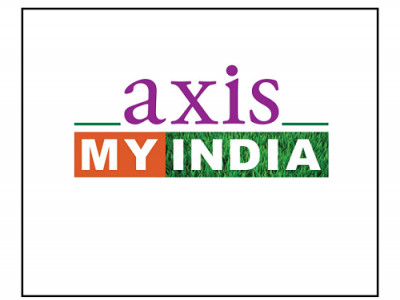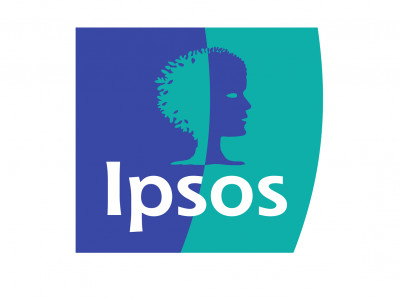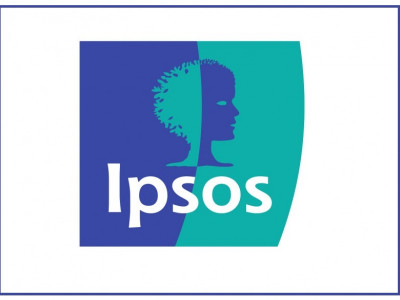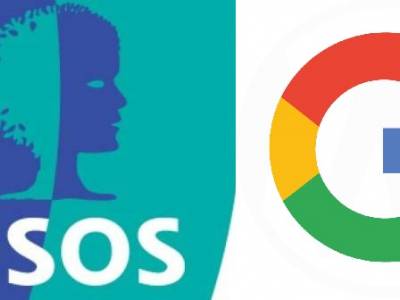Indians 2nd Most Ignorant Population in the World: Ipsos Study
India receive the dubious honour of being 2nd most inaccurate in their perceptions on some key issues and features of the population in the country, according to Perils of Perception survey conducted by global research major Ipsos.
In India we get a lot of things very wrong ….
The wealth that the top 1% own: We massively underestimate the proportion of wealth that the wealthiest 1% own. In fact, India is one of the few countries which underestimate how much of their country’s wealth is concentrated in the hands of the top 1%. The average guess is 40% when actually top 1% owns an incredible 53% of all wealth. And when asked what percentage they think the wealthiest 1% SHOULD own, the public say on average 30%, massively below the actual figure.
Obesity: Weight is a growing public health issue, and Ipsos survey shows Indians are very concerned about it. Indians think 41% of those aged over 20 are overweight or obese, but the actual figure is much lesser at 20%.
Immigration: We think 21% of the population is immigrants – whereas the official estimates are just 0.4%.
“We are ignorant indeed, just like our fellow citizens from 28 countries. In today’s ’24 X 7 connected’ world, our immediate context as well as the messages we receive through traditional and new age media shape our perceptions to such an extent that they are detached from reality,” said Amit Adarkar, Managing Director, Ipsos India.
The Perils of Perceptions research clearly demonstrates this. Perception about immigration is a clear example of this. It may appear surprising to find a much higher proportion of Indian population seem to consist of immigrants¸ but then, recent excessive media coverage on the European refugee crises may have led to a heightened sensitivity to the immigration problem.
Another illustration of this comes from perceptions about the wealth held by top 1% in India. Perceptions peg the number much lower than reality. Not really surprising as one does not see too many messages about poverty, wealth imbalance unlike in the socialistic era of the last century. In today’s eCommerce era of fancy valuations and instant billionaires, greed is good!
Average age: We think the Indian population is much older than it actually is – the average estimate is 49 years old, when the average age is only 27.
Population aged under 14: Despite the perception that the population is on average older than it actually is, Indians also greatly overestimate proportion of the population aged under 14, at 39% – much higher than the real figure of 28%.
Female politicians: We significantly overestimate the number of female MPs in the Parliament. The average guess is 23% when the actual figure is 12%.
Female employment: Indians think a lot more women are employed than they really are, in fact percentage point difference is the highest (+16%). On average we think 41% of working age women are in employment when the real figure is just 25%.
Rural living: Indians think a lot less of us live in rural areas than they actually do – and by implication overestimate how urban our population is. On average, the public guess that 55% of the population lives in rural areas, when the actual figure is lot more at 68%.
Internet access: The explosion in internet access we’ve seen over recent years is well documented, but even so Indians massively overestimate how widespread it is as it primarily an urban phenomenon and online respondents are primarily from urban India. On average, we guess that six in ten (60%) of us have access to the internet at home through a computer or mobile device, when the actual figure is just 19%.
Adarkar added, “At times, the PLU (People Like Us) syndrome causes perceptions to de-link from reality. Our sample is likely to have universal access to internet, being an online sample. The PLU syndrome causes them to believe that 60% of all Indians have access to internet, much higher than the actual 19%. Similarly, a bulk of our sample would reside in urban areas and interestingly they under-estimate the % of population residing in rural areas. PLU syndrome at work again!!”
Ipsos Perils of Perceptions study brings about an important but sad truth. Despite increasing literacy and education levels and in spite of all kinds of factual data available at one’s finger tips (courtesy internet), we remain and in fact grow more ignorant. These perceptions finally become reality. It is quite possible that this de-linking of perceptions from reality leads to people looking at ‘their’ reality based on only their own context and their own PLU set. Perhaps, that is the origin of all the intolerance in today’s world.
Ipsos latest version of the Perils of Perception survey highlights how wrong the public across 33 countries are about some key issues and features of the population in their country.
The top 1%: most developed countries greatly overestimate the proportion of adult wealth the wealthiest 1% in their country own. Britain is the most inaccurate (estimating it to be 59%, over twice the real figure of 23%), but France, Australia, Belgium, New Zealand and Canada are all at least 30 percentage points out of line. A few countries, though, underestimate how much of their country’s wealth is concentrated in the hands of the top 1% - Peru, India, Israel, Brazil and Russia (where the top 1% actually own an incredible 70% of all wealth). There is a lot of variation between the countries on what they think the figure should be, though most of them think it should be lower than it really is – with Russia again standing out as having the highest gap between the amount of wealth they think the top 1% should acceptably own (23%) and the true figure (70%).
Obesity/overweight: Nearly every country we surveyed underestimates how much of a problem weight is in their country. The average guess for the proportion of overweight or obese people is 40%, which is much lower than the actual figure of 54%. Saudi Arabia, Turkey and Israel are the most inaccurate, underestimating the prevalence of overweight and obese people by a massive 43, 33 and 33 percentage points respectively. The only countries that prove the exception are India, Japan, China and South Korea, all nations where the population is much less overweight than the other countries in the study.
Non-religious: Asian countries such as China, Japan and South Korea are fairly accurate about the (relatively high) proportions of non-religious people in their country, but most other countries hugely overestimate the proportion that are non-religious: the average guess across the countries is 37% when the actual average proportion is 18%. This is particularly noticeable in India (average guess 33%, when the true figure is under 1%), in many Latin American countries such as Mexico, Brazil and Peru (who overestimate by 30, 27 and 25 points respectively), and countries as diverse as Russia (overestimation of 29 points), Norway, Ireland and Serbia (all out by 28 points).
Immigration: The average guess across 32 countries is that 23% are immigrants when the actual figure is less than half that (10%). The biggest overestimations tend to be in countries with very low levels of immigration – such as Argentina, Brazil, South Africa, India, Mexico and Peru, all of which overstate the proportion of immigrants by over 20 percentage points – but Canada and the USA, countries with higher levels of immigration, are also among the most inaccurate. Saudi Arabia and to a lesser extent Israel are the only countries that underestimate the proportion of immigrants.
25-34 year-olds living with parents: This question was only asked in developed countries where “actual data” was available. People in almost every country overestimate how many young people live with their parents (by an average of 16 percentage points), both in countries like Spain (with an average guess of 65% compared with a reality of 40%), but also in countries that have less of an excuse for thinking the number of young people living with their parents is so high, notably Britain (which overestimates the reality by 43% to 14%), and France (by 36% to 11%).
Average age: Despite the huge range of countries covered in this study, nearly everyone thinks their population is much older than it actually is. Across the study the average guess is 50 years old when the actual is 37 years. Most inaccurate were Brazil, Turkey, Hungary and India, all of whom thought the average age is 20 years older than it really is.
Population aged under 14: At the same time, nearly every country also overestimates the number of under 14 year olds in their country. The average guess across all countries is 29%, compared with the actual figure of 20% (Israel is the one exception which underestimates the proportion of young people – but they are correct in appreciating they are a relatively young country.)
Female politicians: None of the countries in our study have achieved a gender balance in their lower house (or equivalent), although Sweden comes closest with female politicians making up 44% – in contrast only 10% are women in Brazil, Hungary and Japan. Some countries are reasonably accurate on these true figures - 13 guess within three percentage points – but there are still wide variations. Some countries that do relatively well on their gender balance don’t seem to realise this (such as Mexico, Spain, Belgium and New Zealand), while Columbia, Russia, India and Brazil all think there is better female representation than there really is.
Female employment: The public mostly showed a high degree of accuracy across countries when they were asked how many women of working age were employed in their country – ten countries get within three percentage points of the correct figure. There are though some outliers – Israel significantly underestimates the proportion of female employment (by 29 percentage points), while India, Mexico, South Africa and Chile all think more women in work than really are.
Rural living: Almost all countries in the study overestimate the proportion of their population who live in rural areas. This suggests the public underestimate just how densely populated cities are and conversely how sparse the rural population actually is. The average guess across all countries is 38% when it is actually 23%. Japan is most out of line on this question – by a massive 56% to a real 7%, while India and Serbia both actually underestimate how rural their populations are.
Internet access: There is a big divide between the developed and developing world on estimates of internet access. While most in richer countries slightly underestimate their (relatively high) levels of internet access, in the developing world respondents overestimate how many of their fellow citizens are online. The research was carried out with an online sample, so these findings may reflect how the middle-class/connected population generalises to the whole population from their own experience. For example in India the average guess among online respondents for internet access is 60% - an overestimation of the true picture of 41 percentage points, and in China the average guess is 72%, 26 points too optimistic.
The full Ipsos “Index of Ignorance” is given in the table below. Mexico and India receive the dubious honour of being the most inaccurate in their perceptions on these issues, while South Koreans are the most accurate, followed by the Irish. There are some regional patterns in this table – for example Latin American countries tend to be more inaccurate, European and Americans more accurate – but this hides individual differences, and is not the whole story. New Zealand is the least accurate of the developed countries (in the top five most ignorant), while China is in the top 5 most accurate.
|
Ranking |
Country |
|
|
1 |
Mexico |
Least accurate |
|
2 |
India |
|
|
3 |
Brazil |
|
|
4 |
Peru |
|
|
5 |
New Zealand |
|
|
6 |
Colombia |
|
|
7 |
Belgium |
|
|
8 |
South Africa |
|
|
9 |
Argentina |
|
|
10 |
Italy |
|
|
11 |
Russia |
|
|
12 |
Chile |
|
|
13 |
Great Britain |
|
|
14 |
Israel |
|
|
15 |
Australia |
|
|
16 |
Japan |
|
|
17 |
Canada |
|
|
18 |
Germany |
|
|
19 |
Netherlands |
|
|
20 |
Spain |
|
|
21 |
Norway |
|
|
22 |
France |
|
|
23 |
Sweden |
|
|
24 |
United States |
|
|
25 |
China |
|
|
26 |
Poland |
|
|
27 |
Ireland |
|
|
28 |
South Korea |
Most accurate |
Bobby Duffy, Managing Director of Ipsos MORI Social Research Institute, said:
“Across all 33 countries in the study, each population gets a lot wrong. We are often most incorrect on factors that are widely discussed in the media or highlighted as challenges facing societies, such as the proportion of young adults still living at home, immigration and wealth inequality. We know from previous studies that this is partly because we over-estimate what we worry about – as well as worrying about the issues we think are widespread.
But we do also underestimate some key challenges such as obesity. In many countries, we’re maybe not as worried as we should be, given the extent to which our populations are overweight. We also get facts wrong that will make us focus on some issues more than they perhaps deserve: for example, we tend to think our populations are much older than they actually are, and that more people live in rural areas than is really the case.
There are multiple reasons for these errors – from our struggle with simple math’s and proportions, to media coverage of issues, to social psychology explanations of our mental shortcuts or biases. It is also clear from our “Index of Ignorance” that the countries who tend to do worst have relatively low internet penetrations: given this is an online survey, this is therefore likely to reflect that this more middle-class and connected population generalise from their own experience rather than consider the much greater variety of circumstances in the full populations of their country.”
















Share
Facebook
YouTube
Tweet
Twitter
LinkedIn